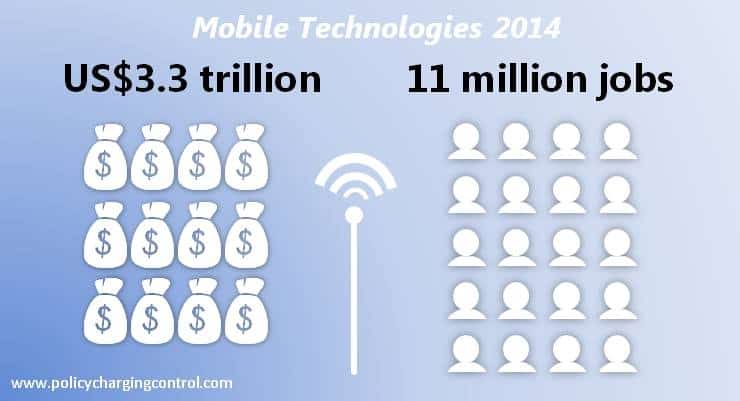Mobile technologies - devices, networks and value added services - have contributed significantly to the world economy, says BCG in its new report "The Mobile Revolution: How Mobile Technologies Drive a Trillion-Dollar Impact. In 2014 alone, the mobile technologies industry generated revenues of almost US$3.3 trillion and created 11 million jobs. In the six major countries which boast the fastest growth rates for the telecommunications sector - US, Germany, South Korea, Brazil, China and India - mobile technologies contributed to US$1.2 trillion in GDP, said BCG in the report which was commissioned by Qualcomm Incorporated. In South Korea, where mobile adoption rate is one of the highest in the world, mobile technologies made up 11% of the country's GDP, it added.
Mobile service is probably one of the fastest adopted technology in recent history, ever since the service was debuted in mid 1980s. Almost every country where mobile service, at that time - mobile voice, was introduced, saw a rapid surge in demand for mobile access, along with a phenomenal growth in the uptake of mobile handsets. In the last decade, this frenzy continued to the mobile Internet service, and demand shifted to voice and data bundles and 'smarter' devices, that provided instant connectivity to people and the Internet, from anywhere in the world.
The rapid uptake of mobile services saw players competiting for spectrums, and licensing saw the emergence of an oligopolistic industry dominated by both cellular companies and telecom service providers who set up their own mobile businesses. BCG said that from 2009 to 2013, mobile companies invested US$1.8 trillion in capital expenditures and R&D while foreseeing the industry investing another US$4 trillion by 2020 to stay ahead of the demand and competition.
BCG's report assessed how the trillions of dollars spent on mobile technologies created value for the most important stakeholders in the mobile ecosystem - the customers, both retail and enterprise. The report found that mobile services delivered an aggregate annual consumer surplus of US$6.4 trillion, an amount that surpasses the GDP of every country in the world except the U.S. and China. The report also found that the value derived by consumers is higher in emerging economies compared to developed economies such as the U.S, Germany and South Korea. In emerging economies such as India and China, consumers received a value of more than 40% of their average income while in the developed economies, the value customers perceived receiving from access to mobile services stood at 12% of their average income. (Find out more in Will You Forgo Chocolate, Alcohol, Coffee, Movies and your Car for Mobile Internet Access? A Large Number of Consumers Say They Will, Reports BCG). Similar benefits were also registered by enterprises, specifically SMEs with access to advanced mobile technologies enabling them to increase revenues up to two times faster and add jobs up to eight times faster, said the report.
- BCG predicts 3G and 4G to grow to 8 billion connections by 2020, and highlighted the current industry trend of reducing tariffs and handset prices admist increasing speeds and richer content. It also pointed out to the importance of patent protection, industry-driven standards-setting and market-driven licensing in supporting the continuous growth and innovation for mobile services globally.
David C. Michael, Report Co-Author
Mobile has been a huge driver of economic growth -- creating jobs and improving consumers' lives. But much more innovation is still needed. Policymakers have an important role to play in sustaining innovation and R&D investment in mobile technologies.
Steve Mollenkopf, Chief Executive Officer, Qualcomm Incorporated
With mobile broadband connections expected to exceed 8 billion by 2020, the demand for additional capacity will continue to accelerate. Qualcomm is investing in the next generation of core mobile technologies so that consumers and businesses all over the world can continue to benefit from the new capabilities that come from breakthroughs in data rates and other advanced features.




















